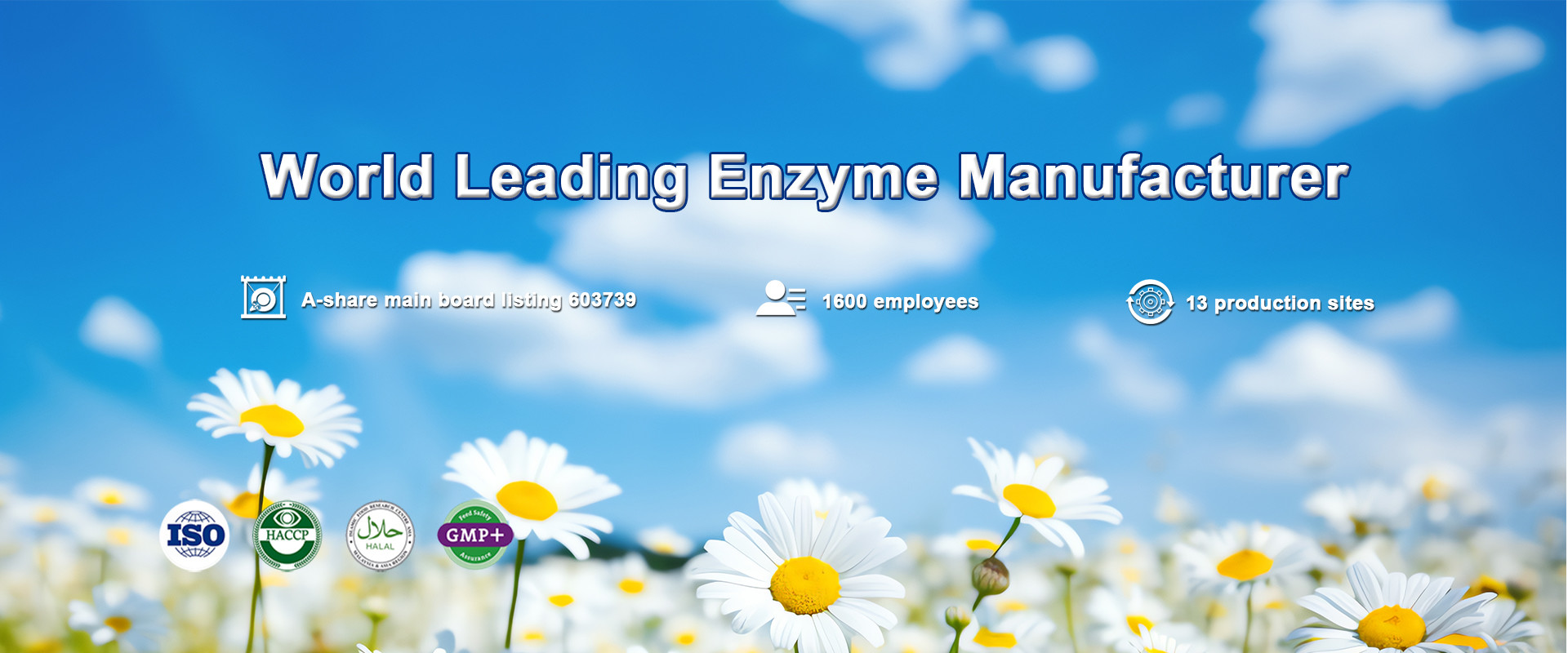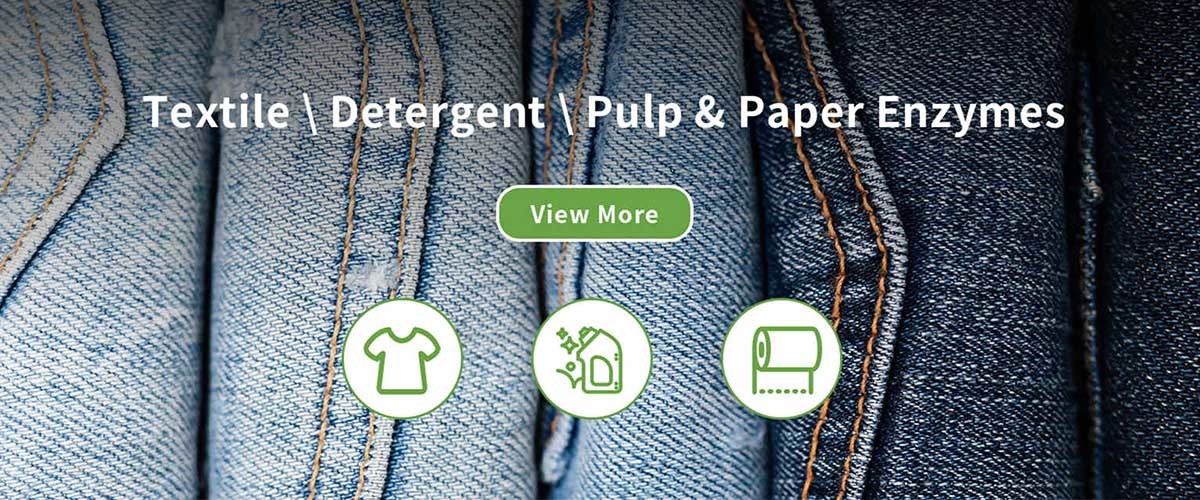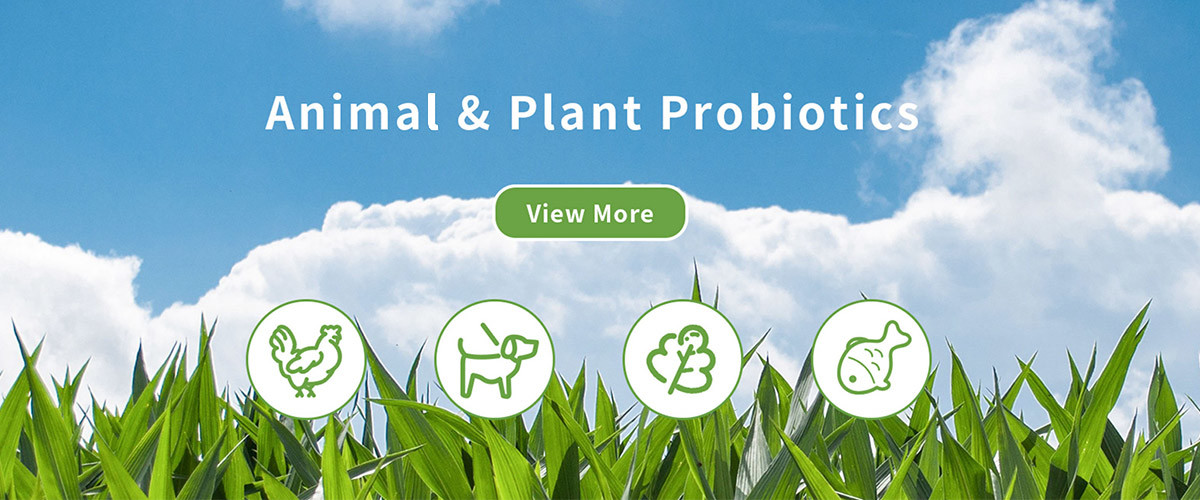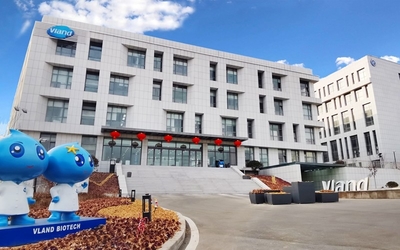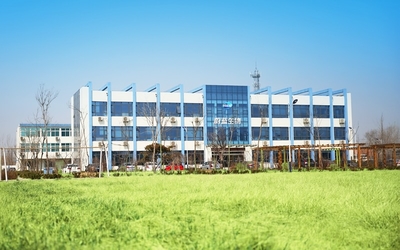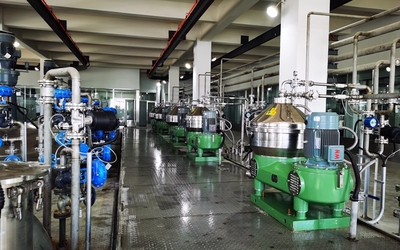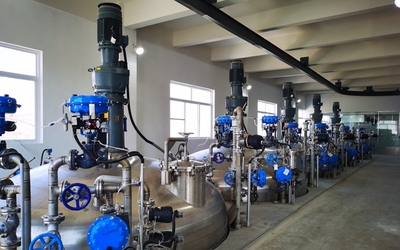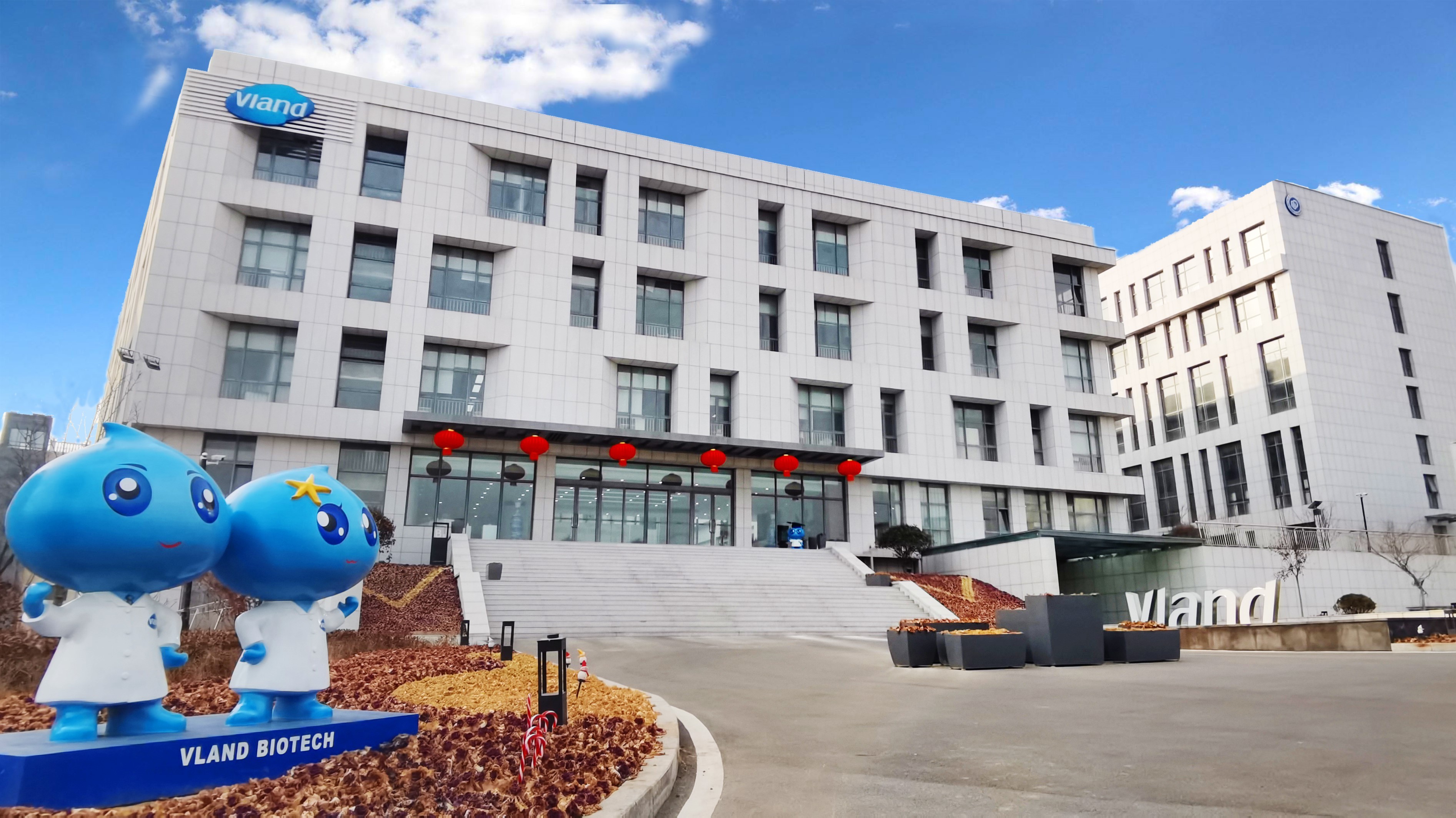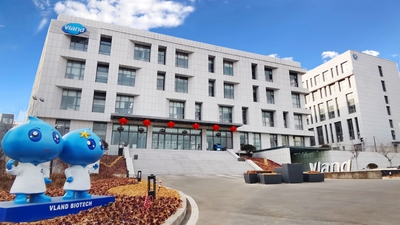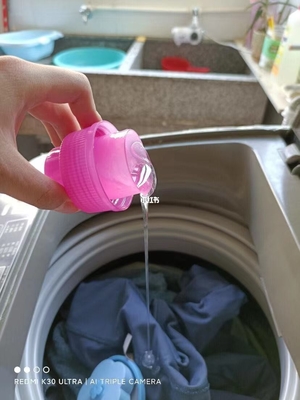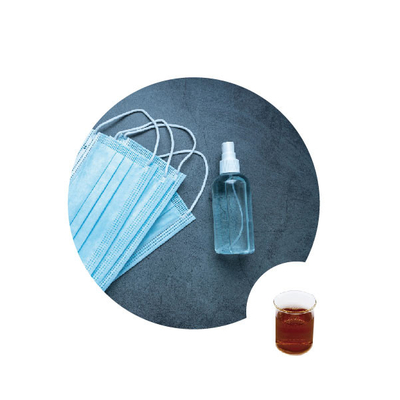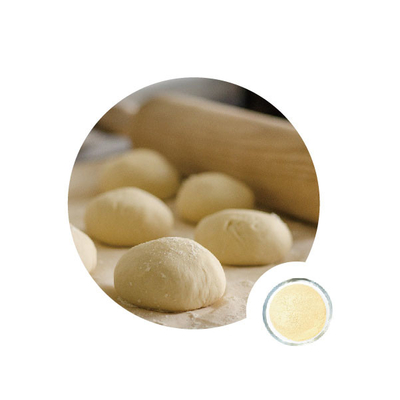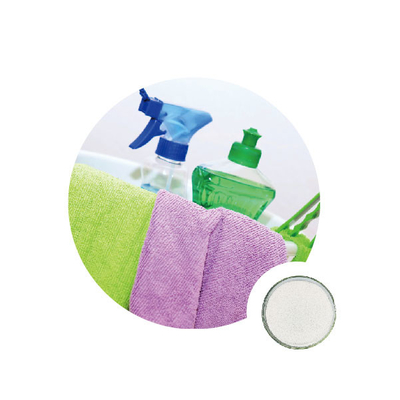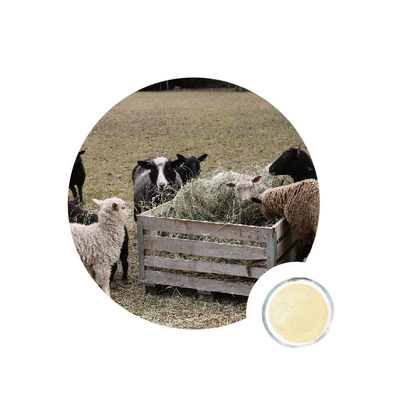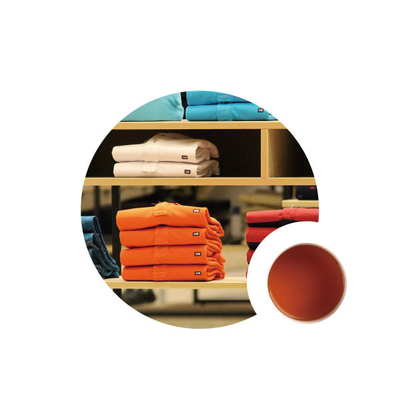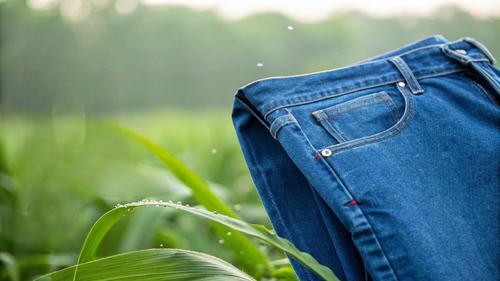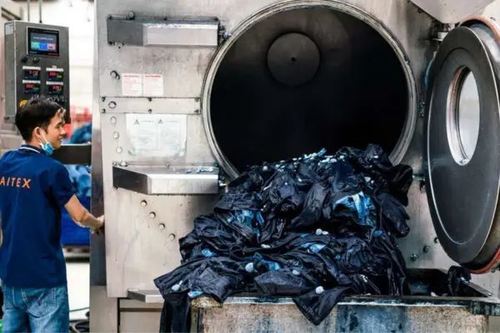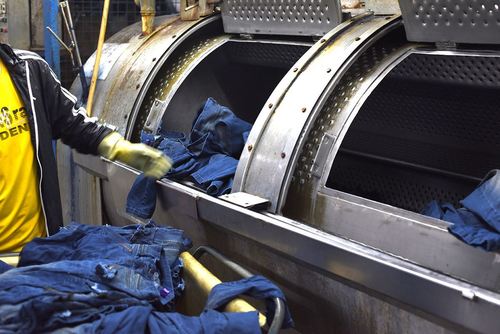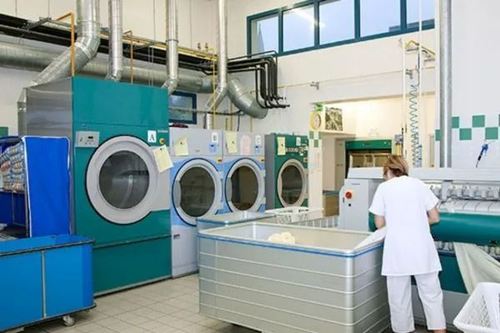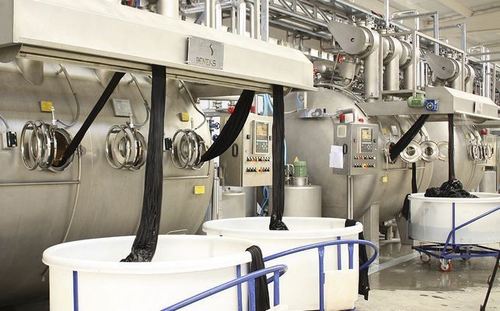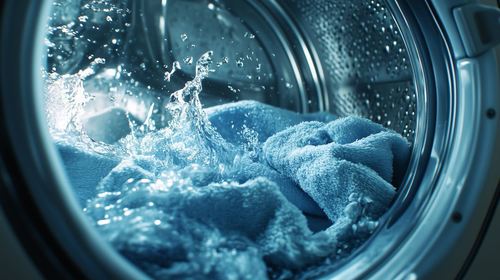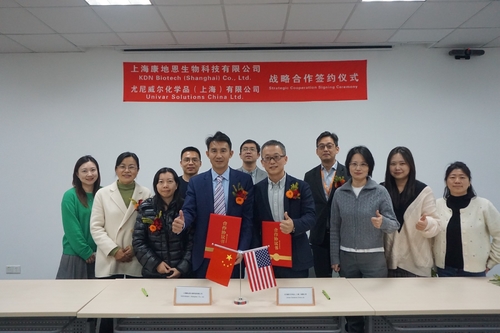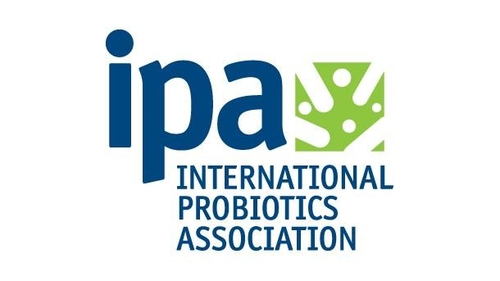Indifade OXD Conc는 데님 워싱을 위한 고농축, 할로겐 프리, 망간 프리 대체재로, 과망간산칼륨 대신 사용됩니다. 안전하고 친환경적이며 사용하기 쉬우며, 인디고 및 블랙 데님에 자연스러운 탈색을 제공합니다. 세탁 화학 물질, 섬유 효소, 세제 효소 및 식품 효소를 사용하는 회사에 이상적입니다.
키워드:
Indifade OXD Conc, 데님 탈색제, PP 대체재, 과망간산칼륨 대체, 지속 가능한 세탁 화학 물질, 섬유 효소, 세제 효소, 식품 효소, 친환경 데님 마감, 데님 스프레이 표백, 의류 세탁 화학 물질, 자연스러운 데님 페이딩, 친환경 데님 화학 물질, 더 안전한 PP 대체재
오늘날의 섬유 산업에서 지속 가능성과 작업자 안전에 대한 변화는 그 어느 때보다 강력합니다. 브랜드, 세탁소 및 의류 가공업체는 유해 화학 물질을 더 깨끗하고 효율적인 솔루션으로 적극적으로 대체하고 있습니다.Indifade OXD Conc, 고농축 탈색제는 바로 이러한 요구에 맞춰 설계되었습니다. — 데님 워싱을 위한 과망간산칼륨(PP)의 더 안전하고, 할로겐 프리, 망간 프리 대체재를 제공합니다.
특히 인디고 및 블랙 데님을 위해 개발된 이 혁신적인 제품은 환경 위험과 운영상의 위험을 줄이면서 자연스럽고 정밀한 탈색 효과를 제공합니다. 브러싱, 스프레이, 스폰지 적용 및 마이크로파이버 장갑 기술과의 호환성을 통해 Indifade OXD Conc는 광범위한 창의적인 데님 마감 스타일을 지원합니다.
설명:Stonezyme WL은 데님 워싱을 위해 설계된 차세대 중성 셀룰라아제 효소입니다. 30~60°C에서 빠른 마모, 높은 대비, 낮은 얼룩을 제공하며, 스톤 프리 또는 스톤 감소 워싱을 가능하게 합니다. 친환경 섬유 가공 및 지속 가능한 워싱 화학 제제에 이상적입니다.
키워드:Stonezyme WL, 워싱 화학 물질, 섬유 효소, 세제 효소, 중성 셀룰라아제, 데님 워싱용 효소, 효소 워싱, 친환경 워싱제, 의류 마감 효소, KDN Biotech, 데님 효소, 효소 처리, 산업용 효소, 지속 가능한 섬유 가공
현대 섬유 산업에서 워싱 화학 물질과 섬유 효소는 환경 영향을 줄이면서 고품질 마감을 달성하는 데 필수적인 역할을 합니다. Stonezyme WL은 KDN Biotech (상하이) Co., Ltd.에서 개발되었으며, 차세대 중성 셀룰라아제 효소 제제를 대표합니다. — 빠른 마모, 낮은 얼룩, 넓은 작동 유연성을 제공합니다. 데님 및 캐주얼 의류 가공을 위해 설계된 Stonezyme WL은 제조업체가 스톤 프리 워싱을 수행하거나 부석 사용량을 획기적으로 줄여 지속 가능성과 직물 품질을 향상시킬 수 있도록 합니다.
혁신적인 효소 기술
Stonezyme WL은 중성 셀룰라아제, 복합 완충 시스템 및 얼룩 방지제를 결합하여 뛰어난 워싱 성능을 제공합니다. 의류의 무결성을 보호하면서 일관된 그레인과 대비를 제공하도록 설계되었습니다. 넓은 온도 범위(30~60°C)와 pH 범위(5.5~8.0)를 통해 다양한 세탁 조건에서도 안정적인 활성을 보장합니다.
주요 특징 및 장점
설명:Stonezyme SF는 데님 워싱을 위한 차세대 중성 셀룰라아제 효소로, 높은 마모성, 낮은 얼룩, 스톤 프리 가공을 제공합니다. 광범위한 온도 및 pH 범위에 맞게 설계되어 세탁 화학 물질 및 섬유 효소 응용 분야에서 지속 가능하고 비용 효율적인 성능을 제공합니다.
키워드:Stonezyme SF, 세탁 화학 물질, 섬유 효소, 세제 효소, 식품 효소, 중성 셀룰라아제, 데님 워싱 효소, 효소 워싱, 친환경 세탁제, 데님용 효소, 의류 마감, KDN Biotech, 산업용 효소, 지속 가능한 섬유 가공
빠르게 진화하는 기존의 식품 효소섬유 효소 세계에서 혁신은 효율성, 지속 가능성 및 품질을 주도합니다. 를 참조하십시오.는 에서 제공하는 에서 개발되었으며, Stonezyme SF의 획기적인 발전을 나타냅니다. 빠른 마모, 높은 대비, 낮은 얼룩을 위해 설계되어 데님 워싱에서 뛰어난 결과를 제공하며, 부석 사용을 크게 줄이거나 심지어 제거합니다.
첨단 효소 기술
를 참조하십시오.는 차세대 중성 셀룰라아제, 향상된 완충 화학 물질 및 얼룩 방지제로 구성되어 있습니다. 이 독특한 조합은 균형 잡힌 성능을 보장하여 우수한 마모성, 허용 가능한 그레인, 온화한 세탁 조건에서도 최소한의 얼룩을 제공합니다.
주요 특징 및 장점
매우 경쟁력 있는 비용 효율성 비율로 우수한 마모 성능
을 제공합니다.광범위한 온도 범위(30–60°C)
— 다양한 공정 조건에서 효과적으로 작동합니다.중성 pH 적응성(5.5–8.0)
— 대부분의 세탁 시스템과 호환됩니다.스톤 프리 또는 스톤 감소 가공
— 부석 사용을 최소화하여 기계 마모 및 환경 영향을 줄입니다.45–55°C에서 최적의 작동
— 그레인, 색상 대비 및 낮은 얼룩 사이에서 완벽한 균형을 이룹니다.를 참조하십시오.Stonezyme SF
를 통합함으로써 제조업체는 에너지 사용을 줄이고, 공정을 단순화하며, 고품질의 친환경 의류를 생산할 수 있습니다.
응용 지침
권장 복용량:데님 의류(벨리 워셔/프론트 로더):
0.5–1.0% owg
권장 조건:온도:
30–60°C (최적: 45–55°C)pH 범위:
5.5–8.0 (최적: 6.0–7.0)를 참조하십시오.Stonezyme SF
를 일관된 세척 효과를 유지하면서 성능을 최적화하고 생산 비용을 절감하려는 세탁소에 이상적인 선택으로 만듭니다.
지속 가능성 및 다용도성기존의 세탁 화학 물질를 참조하십시오.Stonezyme SF는 생분해성 효소 기술에 의존합니다. 낮은 온도에서 중간 온도
에서 효율적으로 작동하는 능력은 에너지 절약과 환경 지속 가능성에 기여합니다.주로 데님 마감을 위해 설계되었지만, 그 제형 기술은 식품 효소 및 세제 효소
를 포함하는 KDN Biotech의 광범위한 효소 포트폴리오의 일부이며, 모두 더 깨끗하고 친환경적인 제조 솔루션을 위해 설계되었습니다.
포장 및 보관포장:
25kg 종이 상자보관:
효소 활성을 유지하기 위해 밀봉된 용기에 25°C 이하로 보관하십시오. 장기간 열에 노출되지 않도록 하십시오.
를 참조하십시오.Stonezyme SF는 가연성이 아니며 적절하게 취급하면 안전합니다. 효소 먼지 또는 미스트 흡입을 피하십시오. 피부 또는 눈에 접촉한 경우 즉시 다량의 물로 최소 15분 동안 헹구십시오. 자세한 취급 절차는 KDN Biotech (Shanghai) Co., Ltd.에서 제공하는
물질 안전 보건 자료(MSDS)
를 참조하십시오.결론Stonezyme SF는 중성 셀룰라아제 효소 기술의 최신 발전과 우수한 공정 효율성을 결합합니다. 광범위한 작동 범위, 비용 효율성 및 친환경 제형은 현대적인 섬유 효소 응용 분야에서 선호되는 선택으로 만듭니다. Stonezyme SF를 사용함으로써 의류 가공업체는 프리미엄 데님 미학을 달성할 수 있습니다—
설명:Stonezyme DP6000은 데님 및 캐주얼 의류 세탁용으로 설계된 고농도 셀룰라아제 분말 효소입니다. 넓은 pH 적응성, 강력한 마모 대비 및 뛰어난 저온 성능을 특징으로 하는 이 제품은 화학 물질 세척 및 직물 마감을 위한 지속 가능하고 비용 효율적인 솔루션을 제공합니다.
키워드:스톤자임 DP6000, 세탁약품, 섬유효소, 세제효소, 식품효소, 데님세탁효소, 저온효소, 셀룰라아제분말, KDN바이오텍, 친환경세탁제, 효소세탁, 의류가공, 효소제형, 산업용효소
오늘날의 섬유산업에서는세척 화학 물질그리고섬유 효소지속 가능성과 고품질 마감을 모두 달성하는 데 중요한 역할을 합니다. 그 중,스톤자임 DP6000, 에 의해 개발됨KDN Biotech (Shanghai) Co., Ltd.,로 눈에 띈다차세대 분말 셀룰라아제 효소데님 세탁 및 의류 마감용으로 설계되었습니다. 그것으로저온 활동,높은 효소 농도, 그리고광범위한 pH 적응성, 최대의 비용 효율성과 환경적 이점을 제공합니다.
Stonezyme DP6000의 주요 특징
스톤자임 DP6000데님과 캐주얼웨어 마감의 까다로운 요구 사항을 충족하도록 설계되었습니다. 다음은 그 놀라운 특징입니다.
높은 효소 농도— 포뮬레이터에게 최고의 비용 대비 성능을 제공합니다.
저온 활동(20~40°C)— 에너지 절약 조건에서도 효과적인 효소 성능을 보장합니다.
넓은 pH 적응성(6.0~7.5)— 중성 또는 약알칼리성 세척 시스템에 이상적입니다.
강한 마모 대비— 색상 당김을 최소화하면서 높은 3D 효과를 생성합니다.
우수한 강도 유지력— 직물의 내구성과 질감을 유지합니다.
안티백 염색— 세탁된 옷을 깨끗하고 밝게 유지합니다.
이러한 이점은스톤자임 DP6000결합을 목표로 하는 데님 세탁소에 선호되는 선택입니다.환경 효율성과 프리미엄 미학.
적용 및 제제
스톤자임 DP6000은순수 효소 분말완충제, 비이온성 계면활성제 및 충전제와 호환됩니다. 맞춤형으로 쉽게 구성할 수 있습니다.효소 세척 화학 물질프로세스 요구 사항에 따라.
권장 적용 조건:
복용량:1~2g/L
온도:20~40°C
pH 범위:6.0~7.5(최적 6.0)
치료 시간:20~40분
일반적인 공식(의류 중량 기준):
스톤자임 DP6000: 0.2~1.5%
완충염: 20~40%
저항염: 0~20%
계면활성제: 0~10%
수용성 필러: 0~30%
컨디셔닝제: 0~5%
메모:음이온성 계면활성제를 피하세요. 최상의 결과를 얻으려면 호환 가능한 비이온 유형을 사용하십시오.
지속 가능성과 다양성
유지함으로써저온에서 고성능, Stonezyme DP6000은 물과 에너지 소비를 줄여줍니다.지속 가능한 솔루션섬유 산업을 위해. 주로 데님 마감용으로 설계되었지만 효소 효율성은 이를 활용하는 다른 산업에도 적합합니다.세제 효소그리고식품 효소향상된 공정 제어 및 친환경 제조를 위해.
안전한 취급 및 보관
밀봉된 용기에 담아 25°C 이하에서 보관하세요.
활동을 유지하려면 열에 장기간 노출을 피하십시오.
효소 분진의 직접적인 접촉 및 흡입을 방지하십시오.
피부나 눈에 닿은 경우 즉시 물로 씻어내십시오.
자세한 안전 지침은 다음을 참조하세요.물질안전보건자료(MSDS)에서 이용 가능KDN Biotech (Shanghai) Co., Ltd.
결론
스톤자임 DP6000의 새로운 벤치마크를 나타냅니다.세척 화학 물질그리고섬유효소 기술. 저온 성능, 고농도 및 우수한 마감 품질로 의류 가공업체가 두 가지 모두를 달성할 수 있도록 지원합니다.효율성과 지속 가능성.자세한 내용은 다음 연락처로 문의하세요.KDN Biotech (Shanghai) Co., Ltd., 신뢰할 수 있는 리더산업용 효소그리고친환경 섬유 솔루션.
설명:KDN Biotech의 Catazyme 800L은 표백 후 잔류 과산화수소를 분해하도록 설계된 농축 카탈라아제 효소입니다. 안전한 염색, 적은 물 사용, 친환경 섬유 가공을 보장합니다.
키워드:Catazyme 800L, 카탈라아제 효소, 과산화수소 제거, 섬유 표백 효소, 표백 후 처리, 친환경 세탁 화학 물질, 염색 준비용 효소, 지속 가능한 섬유 가공, KDN Biotech, 의류 표백 효소, 섬유 보조 효소
표백 후 및 염색 준비를 위한 친환경 카탈라아제 솔루션
과산화수소는 섬유 표백의 핵심 물질이지만 잔류물은 염료 흡수 및 직물 품질을 방해할 수 있습니다. , 개발:를 참조하십시오. , 는 고농축 산업용 액체 카탈라아제 효소로, 유전자 변형된 Bacillus subtilis 균주의 침지 발효에 의해 생산됩니다. 면 니트 및 실의 표백 후 남은 잔류 과산화수소를 분해하도록 특별히 설계되어 깨끗하고 안전하며 염색 준비가 된 직물을 보장합니다.
과산화수소를 산소와 물(2H₂O₂ → 2H₂O + O₂)로 분해함으로써 Catazyme 800L은 친환경적이고 효율적인 솔루션을 제공하여 물 사용을 최소화하고, 처리 시간을 단축하며, 염색 전에 직물 품질을 보호합니다.
일반적인 특성
속성
사양
외관
짙은 갈색 액체
pH
4.5 – 7.0
비중
1.0 – 1.1
활성 정의:1 Ctun = 1 μmol의 과산화수소를 1분당 분해하는 효소의 양 표준 테스트 조건(pH 7.0, 30°C)에서.
주요 장점
효율적인 과산화수소 제거 – 염색 전에 과산화물을 완전히 분해합니다.
물 소비 감소 – 동일한 욕조에서 처리할 수 있어 헹굼 물을 절약합니다.
짧은 공정 시간 – 빠른 생산 주기를 위한 빠른 과산화물 제거.
안전하고 신뢰할 수 있음 – 과산화물 잔류물로 인한 염색 결함을 방지합니다.
친환경적 – 과산화물을 무해한 산소와 물로 변환하여 폐수 부하를 줄입니다.
응용 지침
1. 표백액 욕조를 배수합니다.2. 염색에 필요한 온도 및 액체 비율로 깨끗한 물을 채웁니다.3. 욕조 pH를 6–8로 조절하고 온도가 55°C 미만 계속합니다.4. 0.002–0.005 g/L Catazyme 800L을 추가하고 순환을 시작합니다.5. 10분 후 잔류 과산화수소를 테스트합니다. 존재하는 경우 5–10분 더 계속합니다.6. 과산화물 제거가 확인되면 동일한 욕조에서 염색 공정을 직접 진행합니다.
권장 복용량
일반적인 범위: 0.001–0.01 g/L (직물 유형 및 잔류 과산화물 수준에 따라 다름)
최상의 결과: 55°C 미만의 최적 온도와 중성 pH를 유지합니다.
포장 및 보관
포장: 30kg 플라스틱 드럼
보관: 25°C 이하
에서 밀봉하여 보관하십시오.유통 기한:
적절한 보관 조건에서 12개월
안전 및 취급효소 미스트 또는 먼지를 흡입하지 마십시오. 피부 또는 눈에 접촉한 경우 최소 15분 동안 물로 철저히 헹구십시오.에서 제공되는 물질 안전 보건 자료(MSDS)를 참조하십시오.
KDN Biotech (Shanghai) Co., Ltd.
Catazyme 800L을 사용한 지속 가능한 가공과산화수소는 섬유 표백의 핵심 물질이지만 잔류물은 염료 흡수 및 직물 품질을 방해할 수 있습니다. Catazyme 800L은 화학적 중화제에 대한 친환경적이고 고성능적인 대안
을 제공하여 염색 준비가 된 과산화물 없는 직물을 보장합니다.효소 공정은 섬유 무결성을 보호할 뿐만 아니라 공정 안전성을 향상시키고, 물 사용을 줄이며, 환경 영향을 최소화하여 지속 가능성과 운영 우수성을 위해 노력하는 현대 섬유 공장 및 의류 세탁소
설명:KDN Biotech의 Amyzyme P5000은 75–85°C에서 최적화된 고농축 α-아밀라아제 효소 분말입니다. 섬유 손상 없이 효과적인 전분 제거를 보장합니다. 의류 세탁소, 데님 워싱, 섬유 염색 공장에 이상적입니다.
키워드:Amyzyme P5000, α-아밀라아제 효소, 섬유 탈호 효소, 중간 온도 아밀라아제, 직물 탈호 화학 물질, 데님 워싱용 효소, KDN Biotech, 친환경 세탁 화학 물질, 전분 제거 효소, 효소 탈호, 섬유 가공 효소, 지속 가능한 섬유 화학 물질
깨끗하고 안전하며 친환경적인 섬유 가공을 위한 고급 효소 솔루션
Amyzyme P5000, 은 를 참조하십시오.에서 개발되었으며, 섬유 가공에 사용되는 전분 기반 사이징제 효과적인 제거를 위해 설계된 고농축 α-아밀라아제 효소 분말입니다. 섬유소 섬유를 손상시킬 수 있는 가혹한 산화 탈호 방법과 달리 Amyzyme P5000은 전분만을 대상으로 하여 부드러운 작용, 높은 효율성, 우수한 섬유 강도 유지에 적합합니다.
이 고급 효소 탈호제는 광범위한 온도 범위에서 일관된 결과를 제공하며, 특히 모든 배치에서 정밀성과 신뢰성을 요구하는 의류 세탁소, 데님 워싱, 염색 공장에 적합합니다.
일반적인 특성
속성
사양
외관
분말
수분 함량
≤ 8.0%
미세도
≥ 80%
주요 장점
중간 온도 성능 – 75–85°C에 최적화되어 과열 없이 효율적인 탈호를 가능하게 합니다.
섬유에 부드러움 – 섬유소 구조를 보호하여 섬유 손상 없음 및 우수한 색상 유지에 적합합니다.
다양한 응용 분야 – 콜드 패드 배치, 패드 롤, 지거 및 의류 세탁 공정에 적합합니다.
일관된 결과 – 복잡한 직물 구조에서도 균일한 탈호를 제공합니다.
친환경 – 가혹한 화학 물질의 필요성을 줄여 지속 가능한 섬유 제조를 지원합니다.
응용 권장 사항
일반적인 공정:
패드 배치
패드 롤
지거
의류 세탁
사용 예시:
0.03–0.5 g/L Amyzyme P5000을 사용하여 패드 처리하고, 약 60°C에서 0.5–3시간 동안 유지하여 최적의 탈호 결과를 얻습니다.덱스트린과 잔류 사이즈를 제거하기 위해 적절한 헹굼을 따릅니다.
참고:
패드 스티밍 공정에는 적합하지 않습니다.공정 매개변수
매개변수
최적 범위
작동 범위
pH
6.0 – 7.0
5.5 – 7.5
온도
75 – 85°C
50 – 90°C
성능에 영향을 미치는 요인:
사이징제의 종류 및 양
직물 구조 및 밀도
장비 유형 및 공정 조건
수질 및 경도
포장 및 보관
포장:
30 kg 드럼보관:
밀봉된 용기에 25°C 이하로 보관하십시오.유통 기한:
서늘하고 건조한 환경에서 적절하게 보관하면 12개월입니다.안전 취급
효소 먼지나 미스트를 흡입하지 마십시오. 피부나 눈에 접촉한 경우, 최소 15분 동안 물로 충분히 헹구십시오.
자세한 내용은 KDN Biotech (Shanghai) Co., Ltd.에서 제공하는 물질 안전 보건 자료(MSDS)를 참조하십시오.
Amyzyme P5000을 선택해야 하는 이유?
현대 섬유 및 데님 가공에서 품질과 지속 가능성은 함께 갑니다. Amyzyme P5000은 공장과 세탁소에 화학 탈호에 대한 안전하고 에너지 효율적이며 고성능의 대안을 제공합니다. 제어된 효소 작용은 직물의 부드러움, 색상 및 무결성을 유지하면서 깨끗한 탈호 결과를 보장합니다.
Amyzyme P5000을 세탁 또는 염색 워크플로우에 통합함으로써 더 빠른 탈호, 환경 영향 감소 및 생산 결과의 더 큰 일관성—오늘날의 친환경 섬유 시장의 요구를 충족합니다.
설명:KDN Biotech의 Amyzyme FB New는 섬유 탈호제를 위한 고농축, 광범위한 온도 내성 α-아밀라아제 효소입니다. 빠른 전분 제거, 섬유 손상 없음, 우수한 색상 유지를 제공합니다. 패드 롤, 지거 및 의류 세탁에 이상적입니다.
키워드:Amyzyme FB New, α-아밀라아제 효소, 섬유 탈호 효소, 섬유 탈호, 고온 아밀라아제, 광범위한 온도 아밀라아제, 데님 세탁용 효소, KDN Biotech, 친환경 세탁 화학 물질, 효소 탈호, 전분 제거 효소, 지속 가능한 섬유 가공
지속 가능하고 고성능 탈호를 위한 강력한 효소 솔루션
Amyzyme FB New, 개발자: KDN Biotech (Shanghai) Co., Ltd., 는 고농축 및 광범위한 온도 내성 α-아밀라아제 효소로 효율적인 섬유 탈호를 위해 설계되었습니다. 선택된 세균 균주에서 파생된 이 효소는 전분 기반 사이즈 및 그 유도체를 덱스트린으로 빠르게 분해하여 헹굼 과정에서 쉽게 제거됩니다.
강력한 아밀로리틱 활성은 빠르고 완전한 탈호를 보장하며 섬유를 손상시키거나 색상 밝기에 영향을 미치지 않아 섬유 염색 공장과 의류 세탁소 모두에 이상적입니다.
일반적인 특성
속성
사양
외관
갈색 액체
pH (작동 범위)
5.0 – 7.0
비중
1.10 – 1.25
설명:젤폴리시 P9000을 발견하세요. 매우 농축된 중성 셀룰라세 효소입니다.그리고 세탁 화학 물질의 응용, 섬유 효소, 식품 효소, 세척제 효소.
키워드:셀폴리시 P9000, 셀룰라세 효소, 섬유 효소, 세척제 효소, 식품 효소, 세탁 화학물질, 젠임 세탁용 효소, 바이오 마무리용 효소, 중성 셀룰라세, 효소 분말,환경 친화적 인 효소, 열 안정적인 셀룰라세, 효소 형식
급속도로 발전하고 있는 섬유 및 세탁기 산업에서효소혁신과 지속가능성의 중심에 있습니다.셀룰라세 효소중요한 역할을 합니다.바이오 페니싱,젠스 세탁, 그리고 심지어세척제 용품이 분야에서 탁월한 제품 중 하나는셀폴리시 P9000, 고 농도의중성 셀룰라세 분말 효소첨단 잠수 액체 발효로 개발되었습니다.
셀폴리시 P9000 을 독특 하게 만드는 것 은 무엇 입니까?
셀폴리시 P9000가새로운 세대의 초농축 분말 셀룰라세광범위한 산업용으로 설계되었습니다.효소 활동,폭넓은 온도 적응력, 그리고강한 호환성일반적인 섬유 보조제품과 함께
외모:얇은 갈색 분말
작동 온도:23°C~60°C
최적 pH 범위:50.06.0
수분 용해성:방온에서 완전히 녹는
전통적인 효소 조화법과는 달리 Celpolish P9000은높은 효소 효율성와 함께중립 pH 성능, 제조업체가 통합할 수 있도록바이오 페니싱그리고반응 염색a에서단일 목욕 과정시간, 에너지 및 비용을 절감합니다.
장점 과 산업적 이점
넓은 pH 및 온도 허용:산성 상태와 중성 상태에서 효과적입니다.
열 안정성 효소:액체 셀룰라제 용액에 비해 안정성이 높습니다.
다재다능한 적용:용도:바이오 페니싱넥타이,젠스 세탁, 그리고효소 기반 세척제의약품
비용 효율성:높은 활동은 더 낮은 복용량과 짧은 프로세스 시간을 의미합니다.
환경 친화적 선택:가혹한 화학 물질을 대체하는 효소적인 섬유 처리를 가능하게 하고, 환경 영향을 줄입니다.
적용 지침
바이오 픽닝용
의류 (비부 세척기/전부 충전기):00.1% 0.4%
직물 (제트 또는 부드러운 흐름):00.2~0.5%
젠임 세척용
분말 재구성:00.75%
0.45% 함유량으로:0.5~2%
셀폴리시 P9000이대부분의 보조 장치와 호환그 중분산제,염색 방지제, 그리고격리용 물질, 기존의 수립이나 프로세스에 쉽게 통합 할 수 있습니다.
섬유제품 너머: 더 넓은 효소 응용
셀룰라제는 주로 섬유용으로 알려져 있지만효소는 다양한 산업에서 필수적입니다.예를 들어:
세척제 효소효율적인 얼룩 제거를 위해
식품 효소가공 및 발효용
세탁용 화학물질산업용 청소용 용액
높은 효율성과 광범위한 안정성으로셀폴리시 P9000또한환경 친화적인 세탁 용품더 깨끗하고 지속 가능한 산업 관행에 기여합니다.
결론
직물 및 세탁기 산업이친환경적이고 효율적인 프로세스,셀폴리시 P9000강력한 해결책으로 돋보인다.바이오 기반의 섬유 가공그리고효소 가동 청소 기술.성능, 유연성, 안정성 등이 높은 품질과 지속가능성을 추구하는 제조업체들에게 선호되는 선택지입니다.
설명:특수하게 명명된 Ecomagic Laser-Booster를 사용하여 인디고 및 황 처리 데님에 대한 레이저 마감 효과를 향상시킵니다. KDN Biotech의 이 수용성 솔루션을 사용하면 레이저 출력을 줄이고, 엘라스테인 직물을 보호하며, 더 밝고 선명한 대비를 얻을 수 있습니다.
키워드:Ecomagic 레이저 부스터, 데님 마감 화학 물질, 인디고 데님 레이저 마감, 황 블랙 데님, 엘라스테인 안전 레이저 부스터, 데님 레이저 향상, 수용성 섬유 화학 물질, 고대비 데님 마감, 에너지 효율적인 레이저 마감, KDN Biotech
데님 및 스트레치 직물을 위한 고급 레이저 처리 솔루션
레이저 기술은 정밀한 워시 효과, 독특한 패턴, 과도한 물이나 화학 물질 사용 없이 일관된 결과를 가능하게 하여 데님 마감을 혁신했습니다. 이러한 효과를 극대화하기 위해 특수 레이저 처리 부스터가 인디고 및 황 처리 데님을 위해 개발되었으며, 엘라스테인 함유 직물을 포함합니다.
Ecomagic Laser-Booster 부스터는 붉은 액체 용액으로, 수용성이며 데님 적용을 위해 pH가 최적화되었습니다. 이는 레이저 효과를 향상시키고, 에너지 소비를 줄이며, 고강도 마감 공정 중 직물 손상을 방지하도록 설계되었습니다.
주요 특징 및 장점
시켜 더 선명한 대비와 더 밝은 효과를 제공합니다.인디고, 황 또는 방전 가능한 염료에 대한 레이저 효과를 높입니다.✅
시켜 더 선명한 대비와 더 밝은 효과를 제공합니다. 시간과 에너지를 절약합니다.✅
시켜 더 선명한 대비와 더 밝은 효과를 제공합니다.되어 찢어짐 및 변형을 방지합니다.✅
시켜 더 선명한 대비와 더 밝은 효과를 제공합니다. – 스프레이, 브러시, 스폰지 또는 기계.✅
시켜 더 선명한 대비와 더 밝은 효과를 제공합니다.✅ 전반적인 마감 품질을 향상
시켜 더 선명한 대비와 더 밝은 효과를 제공합니다.일반적인 특성속성
설명
구성
특수 화학 화합물
외관
붉은 액체
pH(10 g/L 용액)
2.0 – 4.0
용해도
수용성
적용 지침
부스터를 0–50% 물로 희석하여 100–50% 작업 용액을 준비합니다.
스프레이, 스폰지 또는 브러시를 통해 의류에 적용합니다.
처리된 의류를 5–10분 동안 자연 건조시킵니다.
레이저 마감을 적용합니다.
50–60°C에서 세제로 세탁하여 그을음 또는 잔류 색상을 제거합니다.
선택 사항: 과산화수소 및 소다/가성 소다 용액을 사용하여 백색도를 높입니다.
2.5 g/L 소다회 또는 1 g/L 가성 소다
3–5 g/L 50% 과산화수소
40–50°C에서 15–20분
포장 및 보관
포장:
25 kg/드럼
보관: 밀봉된 용기에 담아 서늘하고 건조한 곳에 보관하십시오. 직사광선을 피하십시오. 유통 기한: 양호한 보관 조건에서 12개월.
안전 취급피부 또는 눈에 접촉한 경우 즉시 15분 이상 물로 헹구십시오. 자세한 취급 지침은
물질 안전 보건 자료(MSDS)
를 참조하십시오.



